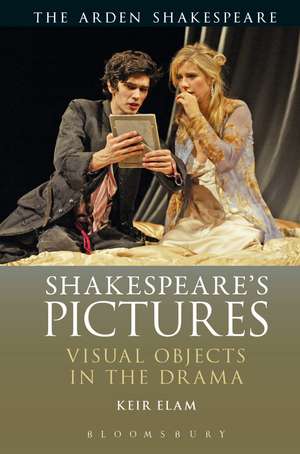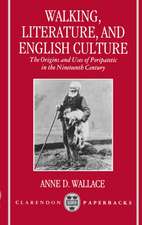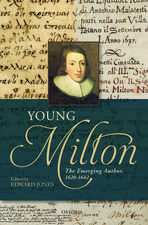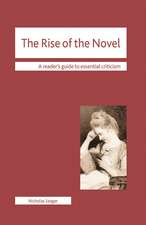Shakespeare's Pictures: Visual Objects in the Drama
Autor Keir Elamen Limba Engleză Hardback – 20 sep 2017
| Toate formatele și edițiile | Preț | Express |
|---|---|---|
| Paperback (1) | 231.69 lei 6-8 săpt. | |
| Bloomsbury Publishing – 20 mar 2019 | 231.69 lei 6-8 săpt. | |
| Hardback (1) | 656.47 lei 6-8 săpt. | |
| Bloomsbury Publishing – 20 sep 2017 | 656.47 lei 6-8 săpt. |
Preț: 656.47 lei
Preț vechi: 943.11 lei
-30% Nou
Puncte Express: 985
Preț estimativ în valută:
125.61€ • 131.15$ • 103.96£
125.61€ • 131.15$ • 103.96£
Carte tipărită la comandă
Livrare economică 05-19 aprilie
Preluare comenzi: 021 569.72.76
Specificații
ISBN-13: 9781408179758
ISBN-10: 140817975X
Pagini: 400
Ilustrații: 48 bw illus
Dimensiuni: 129 x 198 x 26 mm
Greutate: 0.5 kg
Editura: Bloomsbury Publishing
Colecția The Arden Shakespeare
Locul publicării:London, United Kingdom
ISBN-10: 140817975X
Pagini: 400
Ilustrații: 48 bw illus
Dimensiuni: 129 x 198 x 26 mm
Greutate: 0.5 kg
Editura: Bloomsbury Publishing
Colecția The Arden Shakespeare
Locul publicării:London, United Kingdom
Caracteristici
This book offers new insights into canonical plays such as Hamlet, Twelfth Night and The Tempest
Notă biografică
Keir Elam is Professor of English Literature at the University of Bologna, Italy, where he is resident member of the Institute for Advanced Studies and evaluator for the Humanities in the University Research Observatory (Osservatorio della Ricerca). He is the editor of the Arden Third Series edition of Twelfth Night.
Cuprins
Introduction 1. Doing things with pictures 2. Wanton pictures: Intermedial intercourse in The Taming of the Shrew 3. Pictures in boxes: Containers and contained in The Merchant of Venice 4. Hamlet as portrait: A shadow's shadow 5. "That is and is not": The double life of images in Twelfth Night Afterimage: The queen's picture Appendix: Shakespeare's iconographic lexicon References Index
Recenzii
Highly nuanced in its close readings of key moments ... Equally adept in his use of historical sources and his deployment of modern theories of 'performativity', Elam is a stylish guide through the Shakespearean picture gallery.
[Elam's] book offers a number of interesting readings, an astute account of relevant artistic and literary developments, together with a lively sense of early modern history.
Elam's monograph is lucid and insightful; its scholarship and presentation combine to make it a highly informative and enjoyable read.
Offers sharply focused observations about the workings of picture in each individual play, especially the construction of pictures via characters' imaginations.
Elam's textured, historically informed, jargon-free readings will persuade his readers of the serious pragmatic and semiotic functions of pictures in Shakespeare's plays.
Original, engaging, highly innovative and richly researched, this book makes a valuable contribution to the field as the first interdisciplinary study which provides a concentrated and sustained focus on the use of physical "pictures" in Shakespeare's drama. The readings of the individual plays are breathtakingly deft, a tour de force interweaving of image theory, material culture, performance practice and textual analysis. The depth of the research, the illuminating illustrations and a handy glossary of "Shakespeare's Iconographic Lexicon", make this book a bejewelled cabinet of wonders for the discerning reader, from undergraduate level upwards.
[Elam's] book offers a number of interesting readings, an astute account of relevant artistic and literary developments, together with a lively sense of early modern history.
Elam's monograph is lucid and insightful; its scholarship and presentation combine to make it a highly informative and enjoyable read.
Offers sharply focused observations about the workings of picture in each individual play, especially the construction of pictures via characters' imaginations.
Elam's textured, historically informed, jargon-free readings will persuade his readers of the serious pragmatic and semiotic functions of pictures in Shakespeare's plays.
Original, engaging, highly innovative and richly researched, this book makes a valuable contribution to the field as the first interdisciplinary study which provides a concentrated and sustained focus on the use of physical "pictures" in Shakespeare's drama. The readings of the individual plays are breathtakingly deft, a tour de force interweaving of image theory, material culture, performance practice and textual analysis. The depth of the research, the illuminating illustrations and a handy glossary of "Shakespeare's Iconographic Lexicon", make this book a bejewelled cabinet of wonders for the discerning reader, from undergraduate level upwards.

















